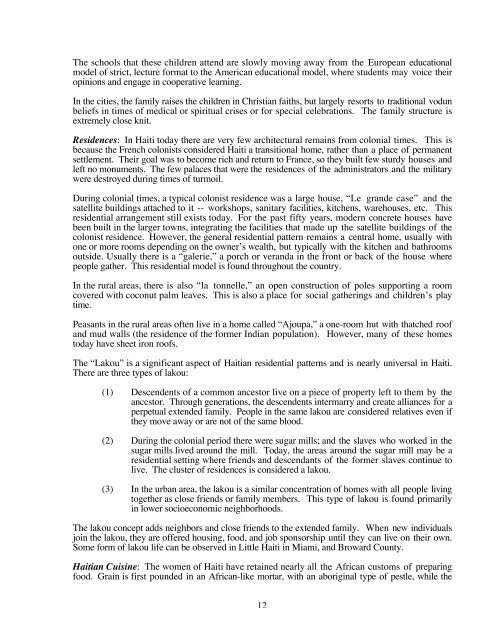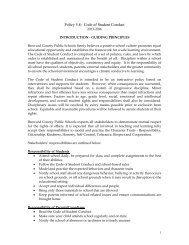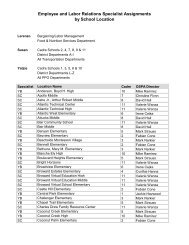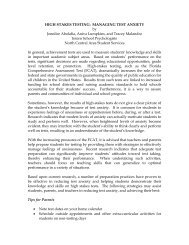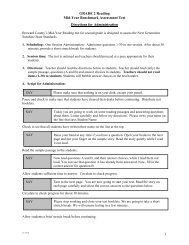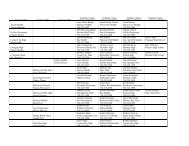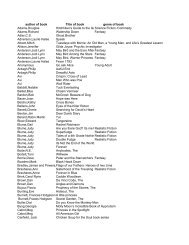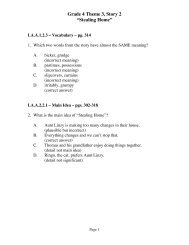Haitian Culture Curriculum Guide
Haitian Culture Curriculum Guide
Haitian Culture Curriculum Guide
Create successful ePaper yourself
Turn your PDF publications into a flip-book with our unique Google optimized e-Paper software.
The schools that these children attend are slowly moving away from the European educational<br />
model of strict, lecture format to the American educational model, where students may voice their<br />
opinions and engage in cooperative learning.<br />
In the cities, the family raises the children in Christian faiths, but largely resorts to traditional vodun<br />
beliefs in times of medical or spiritual crises or for special celebrations. The family structure is<br />
extremely close knit.<br />
Residences: In Haiti today there are very few architectural remains from colonial times. This is<br />
because the French colonists considered Haiti a transitional home, rather than a place of permanent<br />
settlement. Their goal was to become rich and return to France, so they built few sturdy houses and<br />
left no monuments. The few palaces that were the residences of the administrators and the military<br />
were destroyed during times of turmoil.<br />
During colonial times, a typical colonist residence was a large house, “Le grande case” and the<br />
satellite buildings attached to it -- workshops, sanitary facilities, kitchens, warehouses, etc. This<br />
residential arrangement still exists today. For the past fifty years, modern concrete houses have<br />
been built in the larger towns, integrating the facilities that made up the satellite buildings of the<br />
colonist residence. However, the general residential pattern remains a central home, usually with<br />
one or more rooms depending on the owner’s wealth, but typically with the kitchen and bathrooms<br />
outside. Usually there is a “galerie,” a porch or veranda in the front or back of the house where<br />
people gather. This residential model is found throughout the country.<br />
In the rural areas, there is also “la tonnelle,” an open construction of poles supporting a room<br />
covered with coconut palm leaves. This is also a place for social gatherings and children’s play<br />
time.<br />
Peasants in the rural areas often live in a home called “Ajoupa,” a one-room hut with thatched roof<br />
and mud walls (the residence of the former Indian population). However, many of these homes<br />
today have sheet iron roofs.<br />
The “Lakou” is a significant aspect of <strong>Haitian</strong> residential patterns and is nearly universal in Haiti.<br />
There are three types of lakou:<br />
(1) Descendents of a common ancestor live on a piece of property left to them by the<br />
ancestor. Through generations, the descendents intermarry and create alliances for a<br />
perpetual extended family. People in the same lakou are considered relatives even if<br />
they move away or are not of the same blood.<br />
(2) During the colonial period there were sugar mills; and the slaves who worked in the<br />
sugar mills lived around the mill. Today, the areas around the sugar mill may be a<br />
residential setting where friends and descendants of the former slaves continue to<br />
live. The cluster of residences is considered a lakou.<br />
(3) In the urban area, the lakou is a similar concentration of homes with all people living<br />
together as close friends or family members. This type of lakou is found primarily<br />
in lower socioeconomic neighborhoods.<br />
The lakou concept adds neighbors and close friends to the extended family. When new individuals<br />
join the lakou, they are offered housing, food, and job sponsorship until they can live on their own.<br />
Some form of lakou life can be observed in Little Haiti in Miami, and Broward County.<br />
<strong>Haitian</strong> Cuisine: The women of Haiti have retained nearly all the African customs of preparing<br />
food. Grain is first pounded in an African-like mortar, with an aboriginal type of pestle, while the<br />
12


